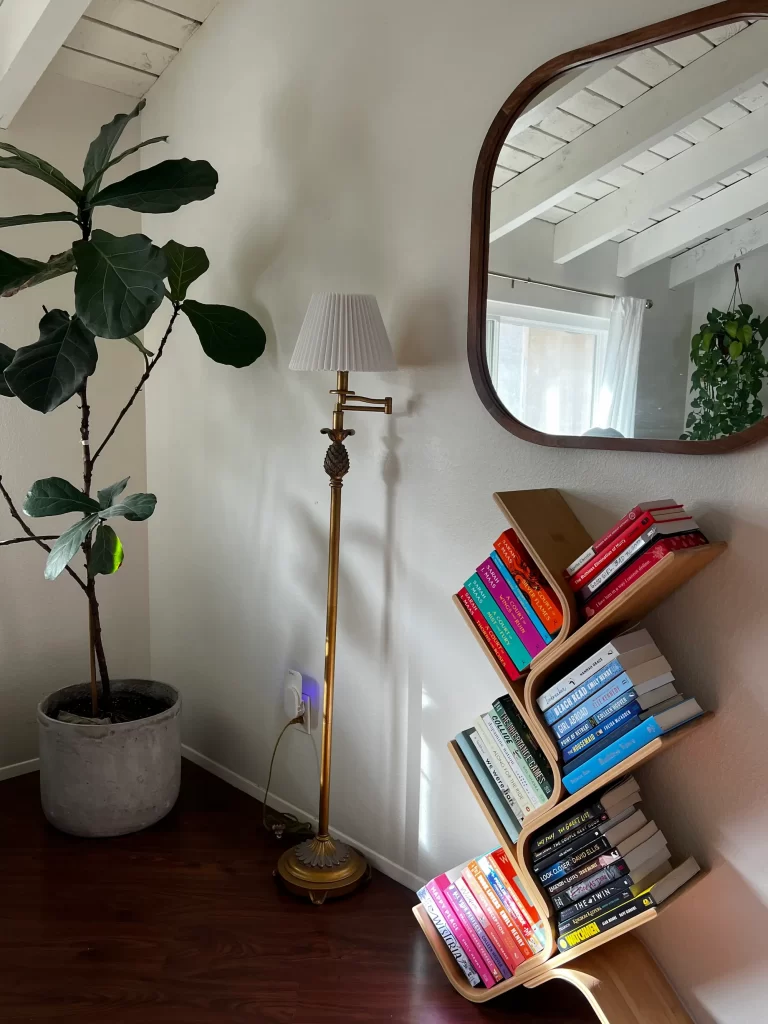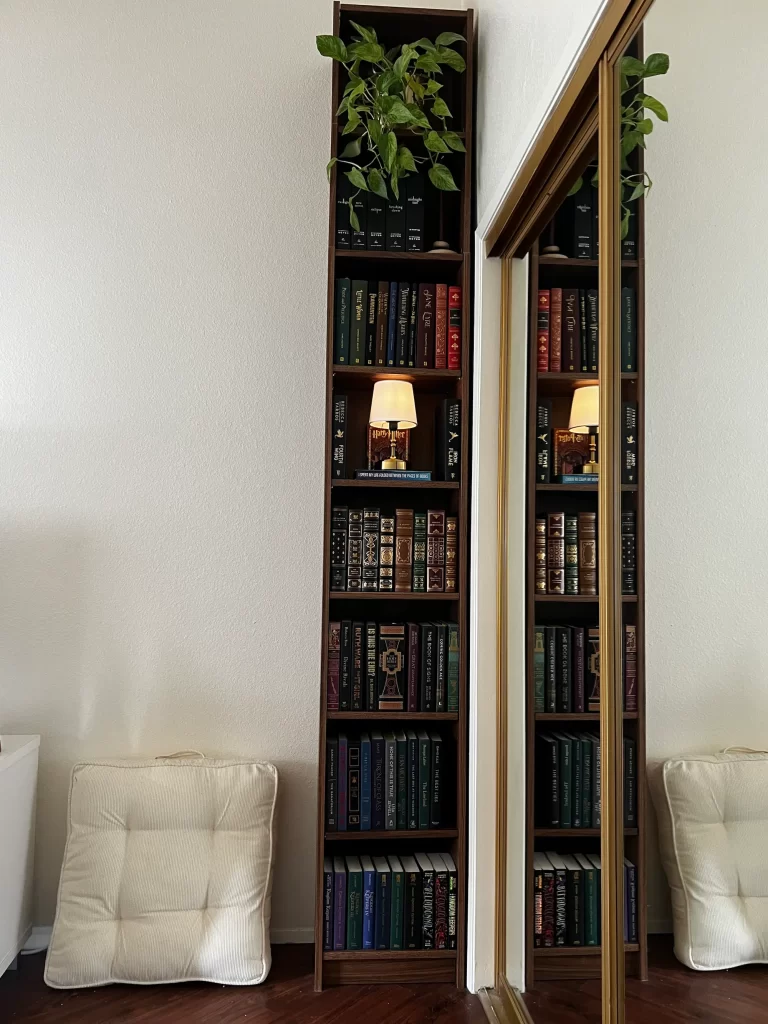Styling a bookshelf is a balance of creativity and practicality. It’s about finding the sweet spot between showing off your personality and being functional. I recently decorated my own bookshelf, and I learned some lessons along the way, so I’m here to help you style your own bookshelf now. Want to buy a bookshelf first? Check out this blog to pick a bookshelf and then return to learn how to style it.
1. Start fresh
Before diving into styling, clear off your bookshelf completely. This gives you a blank canvas to work with and helps you envision your ideal layout. Plus, it’s a great excuse to dust those shelves! While you’re at it, sort through your books and items. Donate what you no longer need and group similar items together — books by size or color, knickknacks by theme, etc.
2. Anchor with books

Books are the stars of the show, so they deserve prime placement. Don’t be afraid to mix things up — stack some books vertically, and place others horizontally to create visual interest. Horizontal stacks also double as pedestals for smaller items like candles or decorative objects. If you’re a fan of color coordination, consider arranging your books by spine color for a playful, rainbow effect. Not a fan? A more neutral, organic grouping works just as well and can feel timeless.
3. Layer in decorative items

Bookshelves are about more than just books. Adding decor gives your shelf personality. Here’s what to include:
- Plants: A small pothos, a trailing ivy, or a quirky succulent adds a fresh, lively vibe.
- Lamps: Adding cordless lamps is a great way to add ambiance to your bookshelf. Click here for a link to the cordless lamp from the photo above.
- Art & frames: Lean a small framed piece of artwork or photo against the back of the shelf for an effortless, layered look.
- Decorative objects: Think sculptural pieces, candles, or souvenirs. Vary the heights and shapes for a balanced display.
- Baskets or boxes: These are perfect for hiding less attractive items like charging cables or mail while adding texture.
4. Play with balance
The key to a well-styled shelf is balance. You don’t want one side to feel heavier than the other. Here’s how to achieve this:
- Use larger, heavier items (like big books or substantial decor) to ground the bottom shelves.
- Distribute colors evenly across the shelves to avoid visual clumps.
- Create asymmetry—if one shelf has books stacked vertically, balance it with a horizontal stack or decor item on the other side.
5. Incorporate negative space
Don’t feel like every inch of the shelf needs to be filled. Leave breathing room between items to create a clean, uncluttered look. Open spaces help highlight the pieces you’ve chosen and keep the shelf from feeling chaotic. Think of your shelf as a gallery — you want your favorite items to stand out.
6. Add texture and height
Mixing textures and varying the height of your objects adds depth to your bookshelf. For example, pair smooth ceramics with woven baskets or shiny metallics with matte pottery. If you have items that are too short on their own, use a stack of books to elevate them. Alternatively, tall objects like candlesticks or vases can make shelves feel more dynamic.
7. Rotate seasonally
Your bookshelf doesn’t have to stay the same year-round. Swap in seasonal decor — fall leaves, holiday ornaments, or summery accents — to keep things feeling fresh. This is also a good time to re-evaluate what’s working. Sometimes, simply shifting items from one shelf to another can give your bookshelf an entirely new vibe.
8. Personalize it
Finally, make your bookshelf yours. Include items that tell a story — family heirlooms, travel souvenirs, or quirky pieces that make you smile. Your bookshelf should reflect who you are, not just look like a page out of a catalog. For a finishing touch, consider adding fairy lights or a small string of LEDs for a cozy, warm glow.
Common styling mistakes to avoid
- Overloading shelves. Less is more. Cramming too much into your shelves can make them look messy.
- Ignoring scale. Be mindful of proportions. Too many small objects can feel cluttered, while oversized items may overwhelm the space.
- Forgetting functionality. A styled shelf still needs to serve its purpose. Leave enough room for the books or items you use frequently.
Styling a bookshelf is a creative process, so have fun with it! Experiment, step back to admire your work, and make adjustments as needed. The beauty of a styled bookshelf is that it’s never truly finished — there’s always room to evolve and grow. Now, grab your favorite books and decor and start styling!






Leave a Reply